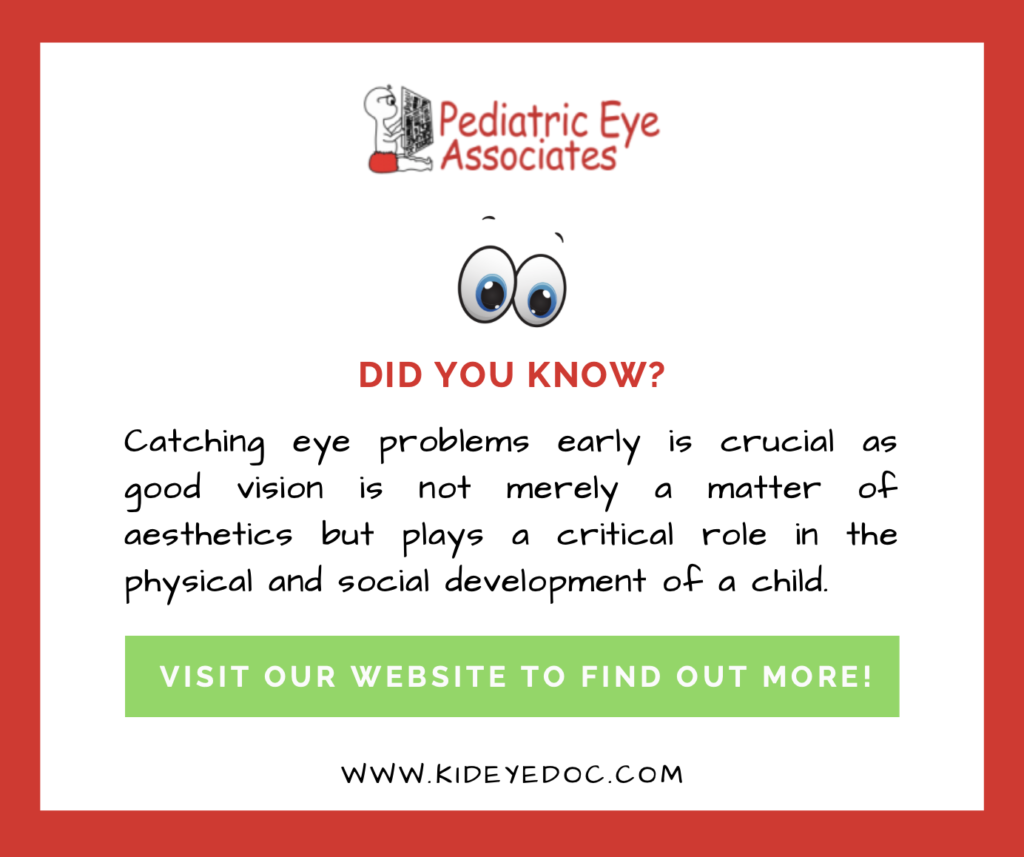Strabismus, or squint, is one of the most common conditions in ophthalmology. Eye doctors are called upon to correct misalignments where one of the eyes has turned upward, downward, outward, or inward. This latter inward deviation accounts for 75% of total cases in the US, which is why strabismus is sometimes called “crossed-eyes”.
There may be different causes of strabismus. Sometimes the muscles in the eyes (6 in each) fail to work together, or there may be a disorder in the brain that prevents coordinated movement in the eyes. Whatever the root cause, both eyes are simply not lining up to focus on the same spot at the same time.
What makes it so challenging for a contemporary child eye doctor is the staggering number of cases. Pediatric ophthalmologists estimate that strabismus affects up to 5 percent of the US population – 15 million patients – with almost 127,000 new cases occurring every year.
Symptoms, diagnosis, and ways out
Since normal binocular vision is indispensable for many day-to-day activities, early detection and prompt treatment of strabismus are critical. Therefore, children suspected of having the condition should be examined immediately. If unmanaged, a patient may develop retinal disorders, or amblyopia, which is often referred to as a “lazy eye”.
Promisingly, our pediatric eye doctors’ knowledge of the disease, and ongoing developments in pediatric ophthalmology, mean that the prognosis for achieving the ultimate goal of normal vision is excellent. This is particularly so in the case of babies and children, as treatment is believed to be most effective during the first 6 years of life. Our aim is no longer just to correct strabismus, but to restore normal vision.
As squint is often accompanied by double vision, blurred vision, eye discomfort, headaches or abnormal head posture, further consultation with other professionals may be needed to help determine the underlying disease process. This is why the treatment plan for a strabismic patient needs to be bespoke and based on the interpretation and analysis of their individual examination and evaluation.
In determining a course of therapy, our physician considers the following:
- The age of the patient (current as well as at the onset of the disease),
- Degree of deviation (size and frequency),
- The overall health of the patient,
- The developmental stage of the patient,
- Presence of other eye condition (e.g. fusion or amblyopia),
- Symptoms of eye discomfort,
- Patient’s/Parent’s concerns,
- Patient’s/parent’s visual needs.
Whether the treatment plan is optical or surgical, our child eye doctors emphasize that successful timely treatment and follow-up of our strabismic patients can bring significant psychological and social benefits. This cannot be overemphasized as both children and adults prefer to see and look like their peers.
Looking for the highest quality medical and surgical eye care? Do not hesitate to call Pediatric Eye Associates!
Our Pediatric Eye Associates is a place where our doctors,
- Amy Lambert, MD, a board-certified pediatric ophthalmologist and strabismus surgeon,
- Rachel Bloom, MD, also a board-certified and fellowship-trained pediatric ophthalmologist,
offer a comprehensive scope of eye care for you and/or your child.
If you have any doubts or questions concerning your child’s vision Contact Us immediately. We will be happy to help!
Pediatric Eye Associates, LLC
22 Old Short Hills Rd. Lower Level-1
Livingston, New Jersey 07039
The material contained on this site is for informational purposes only and DOES NOT CONSTITUTE THE PROVIDING OF MEDICAL ADVICE, and is not intended to be a substitute for independent professional medical judgment, advice, diagnosis, or treatment. Always seek the advice of your physician or other qualified healthcare providers with any questions or concerns you may have regarding your health.


